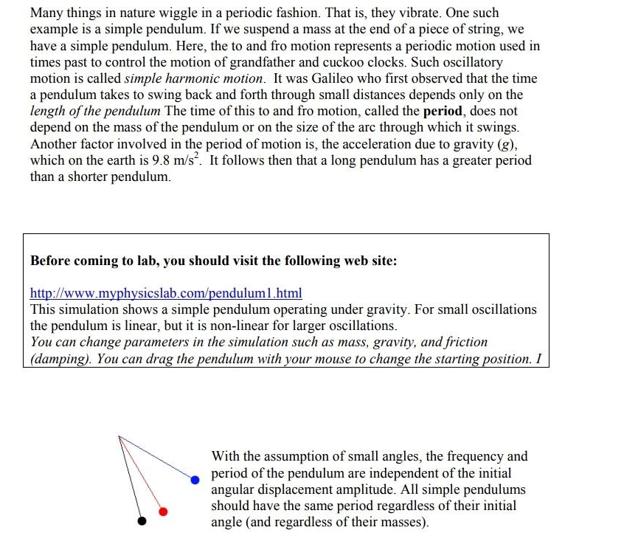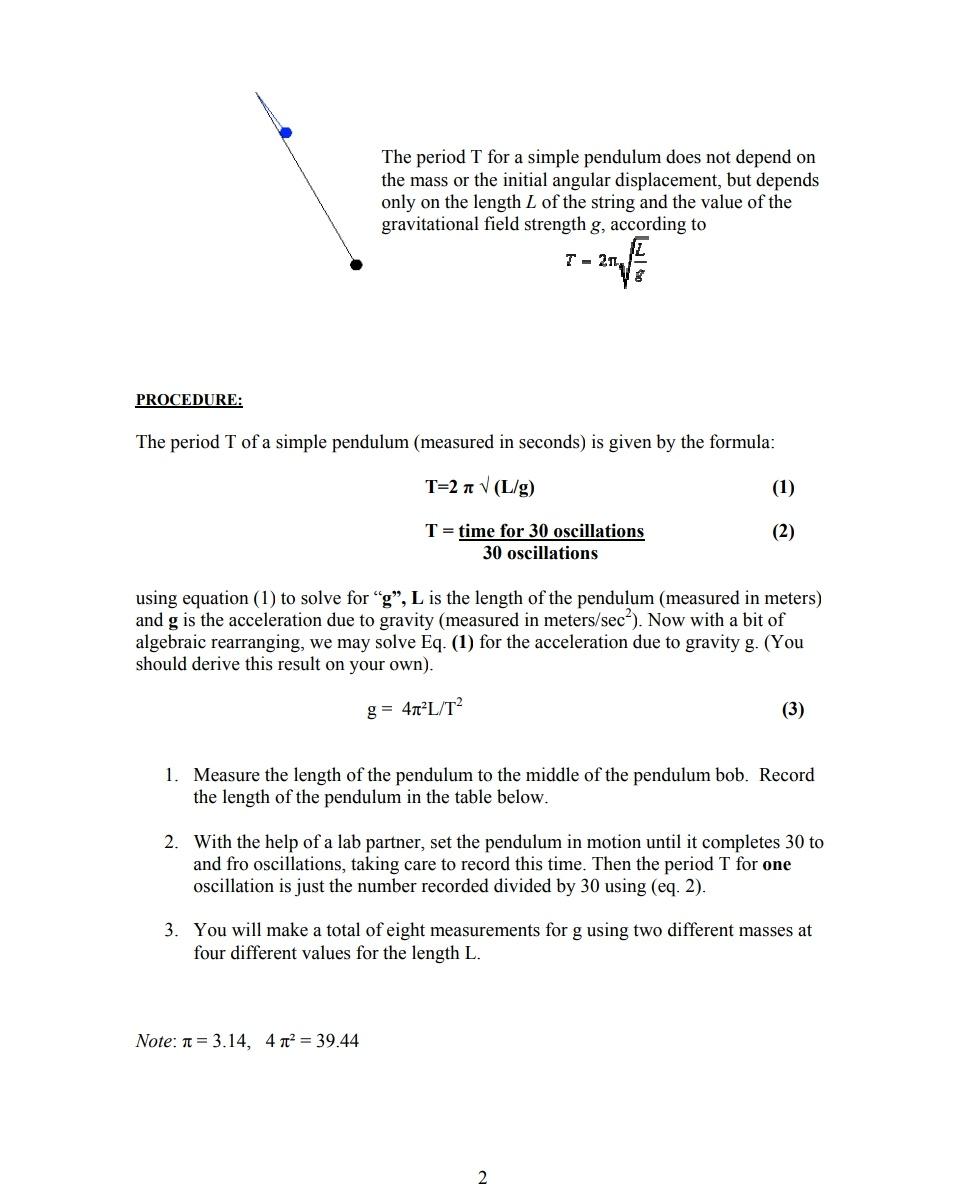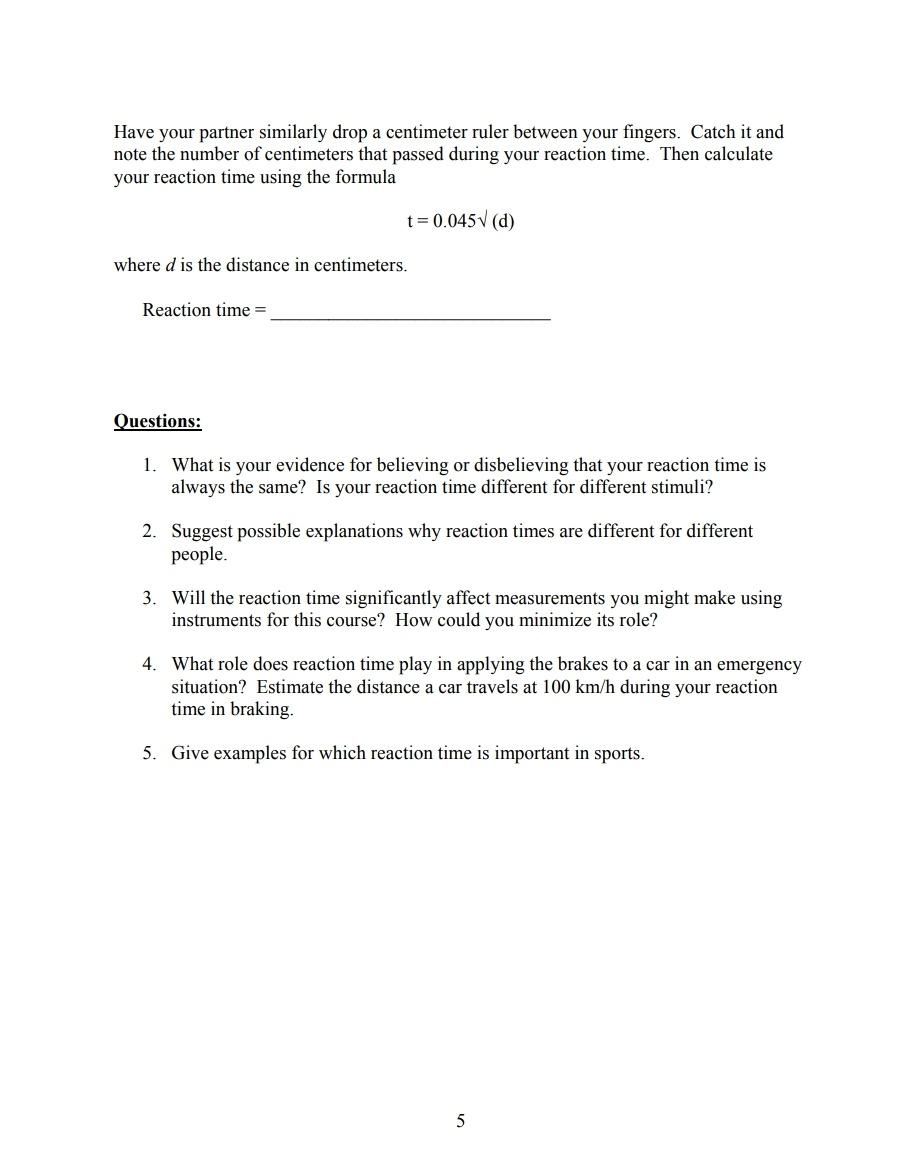Answered step by step
Verified Expert Solution
Question
1 Approved Answer
Many things in nature wiggle in a periodic fashion. That is, they vibrate. One such example is a simple pendulum. If we suspend a






Many things in nature wiggle in a periodic fashion. That is, they vibrate. One such example is a simple pendulum. If we suspend a mass at the end of a piece of string, we have a simple pendulum. Here, the to and fro motion represents a periodic motion used in times past to control the motion of grandfather and cuckoo clocks. Such oscillatory motion is called simple harmonic motion. It was Galileo who first observed that the time a pendulum takes to swing back and forth through small distances depends only on the length of the pendulum The time of this to and fro motion, called the period, does not depend on the mass of the pendulum or on the size of the arc through which it swings. Another factor involved in the period of motion is, the acceleration due to gravity (g), which on the earth is 9.8 m/s. It follows then that a long pendulum has a greater period than a shorter pendulum. Before coming to lab, you should visit the following web site: http://www.myphysicslab.com/penduluml.html This simulation shows a simple pendulum operating under gravity. For small oscillations the pendulum is linear, but it is non-linear for larger oscillations. You can change parameters in the simulation such as mass, gravity, and friction (damping). You can drag the pendulum with your mouse to change the starting position. I With the assumption of small angles, the frequency and period of the pendulum are independent of the initial angular displacement amplitude. All simple pendulums should have the same period regardless of their initial angle (and regardless of their masses). PROCEDURE: The period T for a simple pendulum does not depend on the mass or the initial angular displacement, but depends only on the length L of the string and the value of the gravitational field strength g, according to T-21- The period T of a simple pendulum (measured in seconds) is given by the formula: T=2 (L/g) T = time for 30 oscillations 30 oscillations using equation (1) to solve for "g", L is the length of the pendulum (measured in meters) and g is the acceleration due to gravity (measured in meters/sec). Now with a bit of algebraic rearranging, we may solve Eq. (1) for the acceleration due to gravity g. (You should derive this result on your own). g= 4nL/T (1) (2) Note: 3.14, 4 = 39.44 1. Measure the length of the pendulum to the middle of the pendulum bob. Record the length of the pendulum in the table below. (3) 2. With the help of a lab partner, set the pendulum in motion until it completes 30 to and fro oscillations, taking care to record this time. Then the period T for one oscillation is just the number recorded divided by 30 using (eq. 2). 3. You will make a total of eight measurements for g using two different masses at four different values for the length L. 2 L (meters) QUESTIONS: 1) 2) 3) 4) mass Time for 30 oscillations Period T (seconds) T Average value of g = g= 39.44L/T From your data what effect does changing the mass have on the period (for a given value of the length L)? What role, if any, does air resistance have on your results? Explain your reasoning. 3 Would you conclude that Galileo was correct in his observation that the period of a simple pendulum depends only on the length of the pendulum? On the moon, the acceleration due to gravity is one-sixth that of earth. That is gmoon gearth /6= (9.8 m/s2)/6 = 1.63 m/s. What effect, if any, would this have on the period of a pendulum of length L? How would the period of this pendulum differ from an equivalent one on earth? REACTION TIME Purpose: To measure your personal reaction time. Discussion: Reaction time is the time interval between receiving a signal and acting on it - for example, the time between a tap on the knee and the resulting jerk of the leg. Reaction time often affects the making of measurements, as for example in using a stopwatch to measure the time for a 100-m dash. The watch is started after the gun sounds and is stopped after the tape is broken. Both actions involve reaction time. Procedure: Hold a centimeter ruler so that the midpoint hangs between your partner's fingers. Challenge your partner to catch it by snapping his or her fingers shut when you release it. The distance the centimeter ruler will fall is found using: d = at a=g=9.80 (m/s), is the constant acceleration for all free-falling objects, regardless of their mass or weight. Simple rearrangement gives the time of fall in seconds t = 2d g t = (2/980) x (d) t = 0.045 (d) (For d in cm, t in s, we use g = 980cm/s) 4 Have your partner similarly drop a centimeter ruler between your fingers. Catch it and note the number of centimeters that passed during your reaction time. Then calculate your reaction time using the formula. t = 0.045 (d) where d is the distance in centimeters. Reaction time = Questions: 1. What is your evidence for believing or disbelieving that your reaction time is always the same? Is your reaction time different for different stimuli? 2. Suggest possible explanations why reaction times are different for different people. 3. Will the reaction time significantly affect measurements you might make using instruments for this course? How could you minimize its role? 4. What role does reaction time play in applying the brakes to a car in an emergency situation? Estimate the distance a car travels at 100 km/h during your reaction time in braking. 5. Give examples for which reaction time is important in sports. 5 OBJECTIVE: To measure the acceleration due to gravity using a simple pendulum.
Step by Step Solution
★★★★★
3.51 Rating (164 Votes )
There are 3 Steps involved in it
Step: 1

Get Instant Access to Expert-Tailored Solutions
See step-by-step solutions with expert insights and AI powered tools for academic success
Step: 2

Step: 3

Ace Your Homework with AI
Get the answers you need in no time with our AI-driven, step-by-step assistance
Get Started


